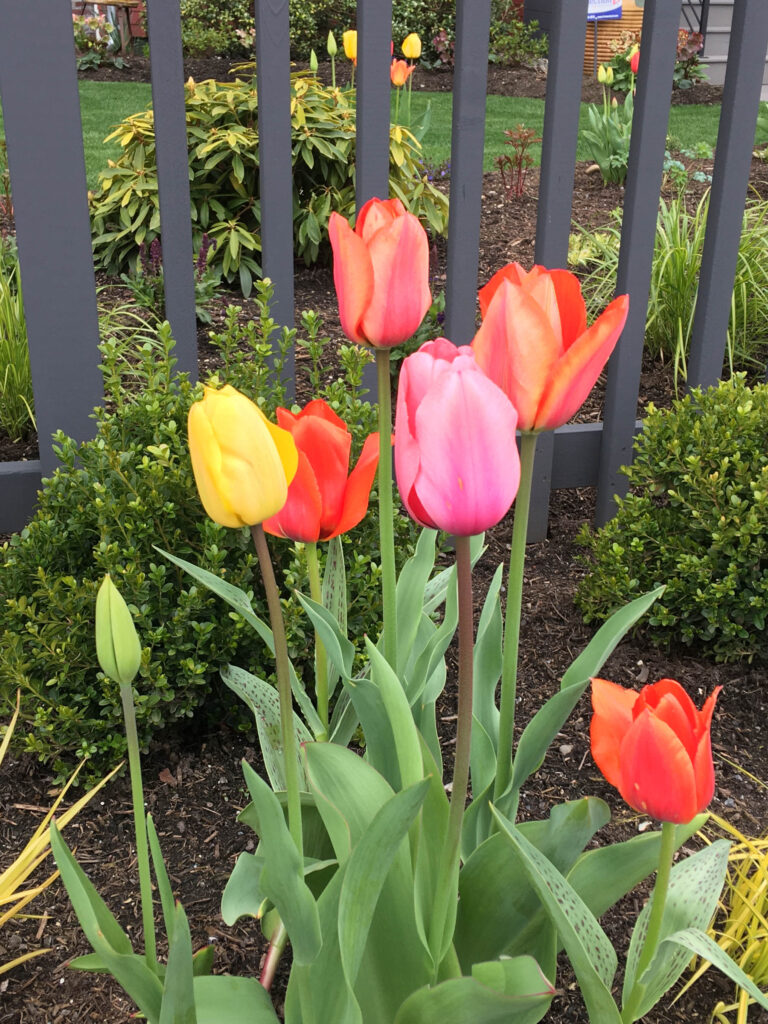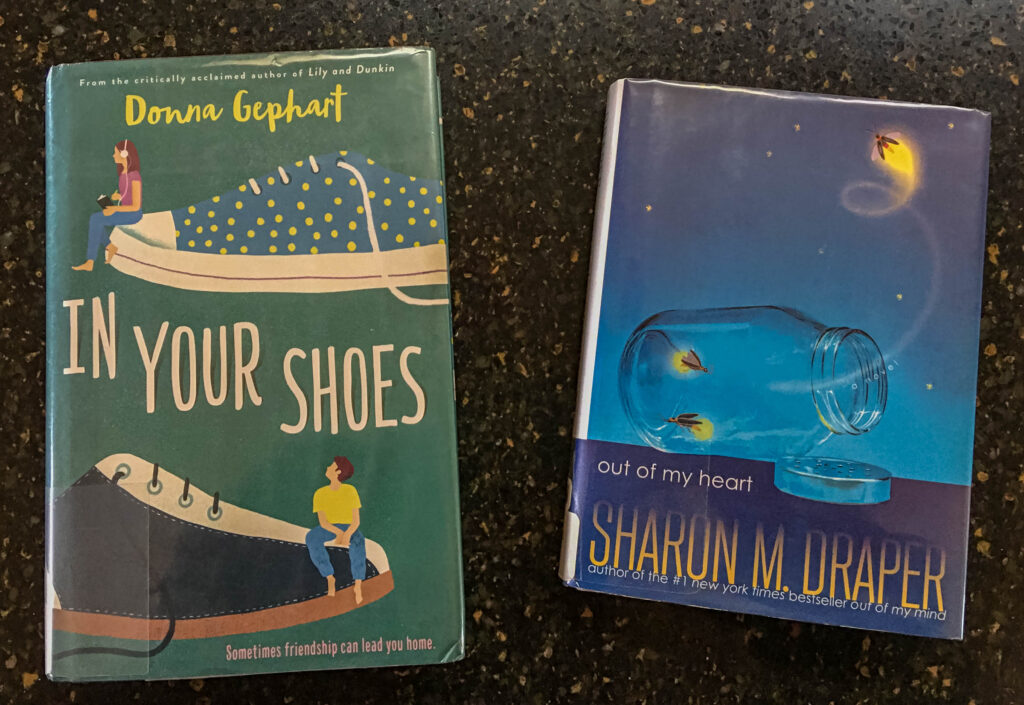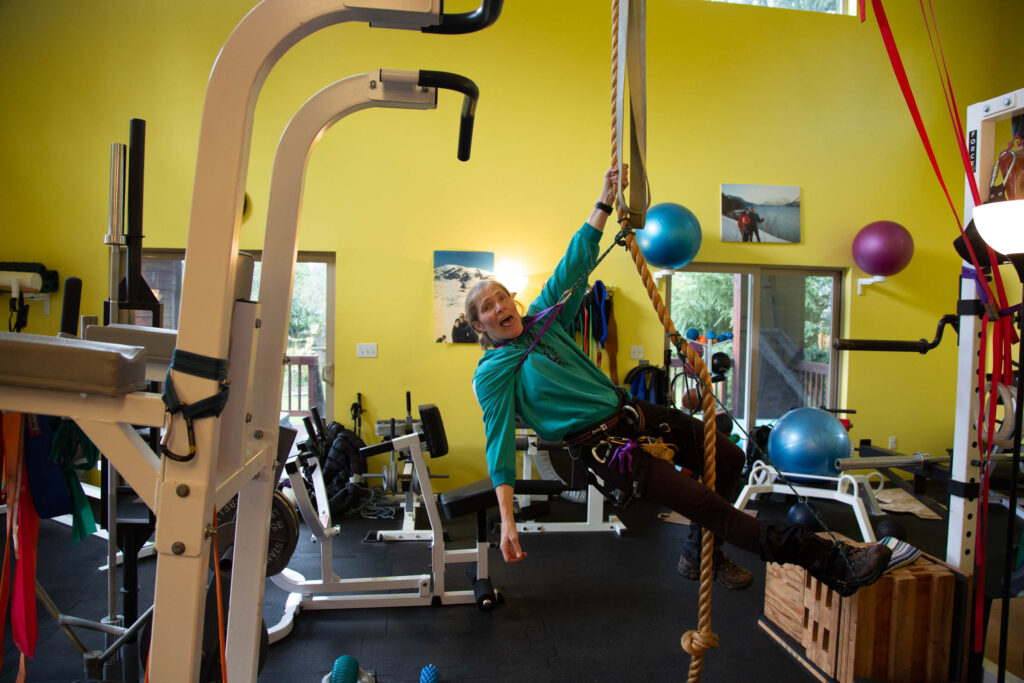I won’t lie; it’s been a tough week. And not just for me. I have experienced a number of disappointments I won’t go into, along with several joys. Such is life. But when I’m proverbially stuck in a valley longer than I am on the peaks, I know I need to dig into extra strategies to pull myself out. When nothing else works, perhaps something below will help you the next time you want to bury your head in bed and skip a day, or a week.

Get Outside
Whenever I feel overwhelmed, under-motivated, blocked, or stuck, I almost always find peace and tranquility in nature. Especially this time of year with all the birdsong and blossoms. Twice on Monday, I broke down in painful tears. My lovely canine companion trotted over, to lick the salt from my cheeks, tail wagging the whole time. He may not be certified as a therapy dog, but he is MY therapy dog. It’s impossible to stay sad for long when a bundle of fur is nosing his way into my personal space.
I felt a brief twinge of annoyance both times — after all, I was making my way through my endless list of rehabilitative exercises — but then I recognized his wordless wisdom: “Mama, I know just what you need. Walkies!” And by golly, it worked, both times. The take-away: if you can’t think of any way forward, then PHYSICALLY move outside. The fresh air might do wonders.

Give Your Brain a Small Task to Focus On
This past week I have depended on several other things to get me through: puzzles; books; movement; and chores.
Puzzles
Two types of puzzles have helped this week. Short 200-300-piece jigsaw puzzles are doable in a single sitting. When you are putting together pieces of a beautiful image (of playful kittens or a peaceful beach scene) it’s hard to feel mopey. The other type is word games, though any short game or app can do in a pinch. Wordle has taken the world by storm. I prefer Classic Words, the closest I can find to old-fashioned Scrabble. Time: 5-30 minutes.

Books
Likewise, the latest books I’ve read — In Your Shoes by Donna Gephart, Out Of My Heart by Sharon Draper, and Sunshine by Marion Dane Bauer — have provided food for thought when the idea of preparing a meal with one hand leaves me wanting to skip meals. These three middle-grade novels are about outsiders trying to fit in. Each provides a fresh perspective on injury and disability. I could take on a deep and challenging read, but when I have low bandwidth, reading books that are light, easy, and entertaining feels more self-compassionate. Time: several hours, broken into 5+ minute increments.

Movement
It is easy to get overwhelmed by the daunting list of “to-do’s” around injury or illness recovery. As someone who knows quite a bit about the physical body, my list includes physical therapy exercises, red light therapy, massage, sauna, isometrics, hot tub, strength, medical appointments, and more. I could easily spend the whole day doing wrist-related activities and then collapse into bed only to start the whole thing the following day.
Instead, it helps to set a KISAGE goal. What is enough? Today, can I get my thumb and pinkie to touch without help from my left hand? Can I make it through dinner right-handed without dropping my fork? Can I work on developing an increased range of motion while I walk my dog? Fifteen-minute segments dispersed throughout the day.

When Nothing Else Works, Prioritize Recovery
Sometimes even the special tricks above don’t work. If you have a pet, you might want to put on music and snuggle. Or watch a favorite movie. If you are an extrovert, try calling a friend to join you for a walk or meet on Zoom or Facetime. If your usual fun hobbies hold little appeal, you might try one of my last three tricks: eat, sleep, or cry.
Eat Something Nourishing
No, this is not an invitation to binge. But I have noticed during my injury, I have had a greatly decreased interest in food. Partly because it is hard to prepare one-handed, and partly because what I can make has become super boring. One day I forgot to eat until three and wondered why I was so wiped out. However, if you go too long without food, you might get hangry (hungry/angry) or overly emotional. If you struggle to remember when you last ate, have a nourishing meal. As soon as I get a decent meal in me I usually feel much better.

Get Extra Sleep
If you are completely exhausted, you may need to double down on your efforts to get enough sleep. I usually get 7.5-8 hours of sleep. But during my recovery, I recently slept close to ten hours, then took an hour and a half nap that afternoon. Healing — bones, from illness, from grief — takes time and effort to prioritize. When I can’t muster the energy for anything else, I take a book and my dog into the bedroom for a nap. It almost always helps me feel better.

Let It Out!
I come from a background of hiding tears, feeling somehow that crying is a sign of weakness. Nothing could be further from the truth. According to Medical News Today, crying may actually help us reduce stress hormones and other chemicals that build up in our bodies. No wonder we feel better after a big cry!
If you have a favorite strategy not mentioned above, please feel free to share the wealth and comment below. Good luck, and remember, YOU ARE NOT ALONE!


Difficult times often seem to reinforce feelings of loneliness, even if just from the perspective of how seemingly unique our personal challenges are. Who can truly understand “what we are going through”? I am both glad and sad to be reminded that I am not really alone facing the unexpected and unwelcome as I keep hunting for joy. What can I do to make sure that joy delayed does not become joy denied? Can I turn the delay itself into opportunities? It does feel so very daunting! Many thanks to you Court, and also Silvie Marie and Penny, for sharing some of the strategies that can help us “make lemonade” in trying times. We all seem to concur that stepping outside, in “the open”, feeling the elements around us, and taking in the beautiful sights/sounds/smells of nature (big and small) is one of the most soothing balms available. Reflecting on my current 8 weeks “slump”, following minor but activity-limiting injuries, I find that a few other of the “recipes” in the blog
served me well. For example, keeping my brain ENGAGED so it does not constantly dwell on the “loss” (idle brains and idle hands toil side by side in that infamous workshop….): writing long-postponed reviews of trails I visited in the past few months, planning and executing the “remodeling” and upgrade of our home-office area, decluttering house and garage to then donate “the proceeds”, etc. These side projects provide a trickle of moral boosters through the feelings of “accomplishment” and “moving forward” they generate. This could easily become overwhelming and therefore counterproductive but, using the ONE-THING-a-Day approach discussed in previous blogs, the objectives can be kept “bite-size”. “Actively RESTING” has helped too; slowing way down and embracing the regenerative effect of calm and mindfulness, closing my eyes and focusing on my breathing, on how my body speaks to me; letting thoughts and feelings “come to the surface” unrepressed even (or especially) if sobs and tears occasionally ensue (these are part of the healing process). I agree as well that MOVEMENT and BOOKS are trusted companions as we make our way through these unplanned detours. Next is the Swiss army knife of the Serenity Prayer; it helps focus
my thoughts and energy since, left to my own devices, I would spend an inordinate amount of time ineffectively “brooding”. Last, and one of my favorites, is framing these setbacks as their own independent adventures. In the “How to Mentally Prepare for Summit Day” blog post, you mention that one of your all-time favorite components of alpine climbing is “Being self-sufficient in dealing with the elements.”. Along the same lines, becoming RESILIENT enough to weather (!) my setbacks should feel like a great accomplishment, its own virtual “summit experience”. Of course, fond memories of previous adventures include majestic views, the pride of having powered through the physical gauntlet
, the exhilaration of reaching the “finish line”, etc. They also very much include the great pride coming from knowing I kept going when an indifferent universe was “dishing out” challenge after challenge, most of them unforeseen. While “in the slump”, I try to remember how these very moments will end up being some of my biggest successes; they are an integral and VALUED part of the adventure. They not something to “get rid of” or “get over with ASAP”, but something to study, strategize for, prepare for, and “climb” – a puzzle to solve. Could “slump tagging” become a new thing?
So much wealth here, Gerard. It helps me remember my own deeply held belief that “all things happen for a reason.” I was meant to struggle through the wrist injury for lessons I probably have not even stumbled upon yet — resilience of course being one of the biggest — but also taking a step back and looking at all of those mini-wins along the way, whatever they might be: being able to buckle my dog’s tricky harness. Being able to zip a zipper. Lace my boots. Wear my favorite cheerful coat now that I don’t need a brace, sling or cast. Being able to trim my own nails. Small but huge at the same time. I keep waiting to be able to shoot with my DSLR camera again but yesterday’s “mini-hike” gave me the confidence that, at just under 8 weeks, I am ready to go out again safely and confidently. Baby steps. Finally, WE ARE THE HEROES OF OUR OWN JOURNEY. How do we want to write our story? Do we want our life to beat us back? or do we want to overcome the obstacles and find our way through? ABSOLUTELY. As I quoted on my personal private Facebook feed, “Limitations live only in our minds.” If we can believe, we can achieve. If we think we can’t, we’re right. So going forward from here, I believe once again in the power of affirmations: I GOT THIS. Say it with me: I CAN. I AM INVINCIBLE. It may not feel like it in the moment but keep saying it over and over. I AM THE HERO OF MY OWN JOURNEY. See what comes up and what you can do. Thanks for the post! Believe, and you can achieve!
Thanks for sharing, Courtenay. Very good article. The big thing for me to relieve stress is spending as much time I can in nature. Walking, hiking and backpacking are the best activities. Sleeping is also very important. I am lucky I don’t need lots of it. I love reading good fiction and poetry books. I am tired of self improvement books.😳. Lately I’ve been feeling super good. I can’t wait to do more hiking and backpacking trips. Thinking of you and sending good vibes . Keep blogging!
Thanks for the comment, Silvie-Marie, and good to hear you’re feeling super. Fabulous! Yes, I am within a week to ten days of getting out for a hike and it can’t come soon enough! Keep on shooting and hiking!
Hi Courtenay,
Thank you for your post this week. It has come at a point in my life where I have been struggling. Getting out and more sleep has been helping me a lot too.
Something new that I decided to do this time was to list out all my stressors then rank them. Beside each one I wrote whether or not there was anything that I could, should do to help with the stress it was causing.
Something like:
College courses
Work
Covid exposure at the gym
Living alone
and so on.
Making the list helped me to evaluate areas in my life where i could make some changes to help me cope with my current life challenges, which happen to be mental this time. Stress, anxiety, depression, panic, loneliness. This process felt very empowering. It gave me a tangible list to create actionable tasks that would move me towards a healthier mental state.
Thank you for sharing your journey and insights. Your words are appreciated.
You are not alone either. 😉
Pen
Fabulous process, Pen! 🙂 Thanks for sharing. When I read this I got a warm fuzzy feeling. Just knowing we are not isolated cases — that these feelings are universal to the human condition and that others may have tips and strategies for dealing with them, managing, handling, overcoming them — makes a world of difference. You can also try “ranking” them in terms of choices and stress levels — what is more IMMEDIATE than the others, so that you might find some relief in one area that allows you to have more bandwidth to deal with the others. And identifying WHY a particular area is important — in the moment, for example, you might ask, WHY am I taking these classes?? BECAUSE they will help with these OTHER areas of stress … if I just hang in there another quarter… can help.
Hang in there and whenever and wherever possible, seek help. That’s another strategy I did not mention (there are so many!) but which can be just as important as the others. I went for immediate relief — sometimes lining up the right help takes some time. You got this!
Thanks for the post and strategy. All the best.